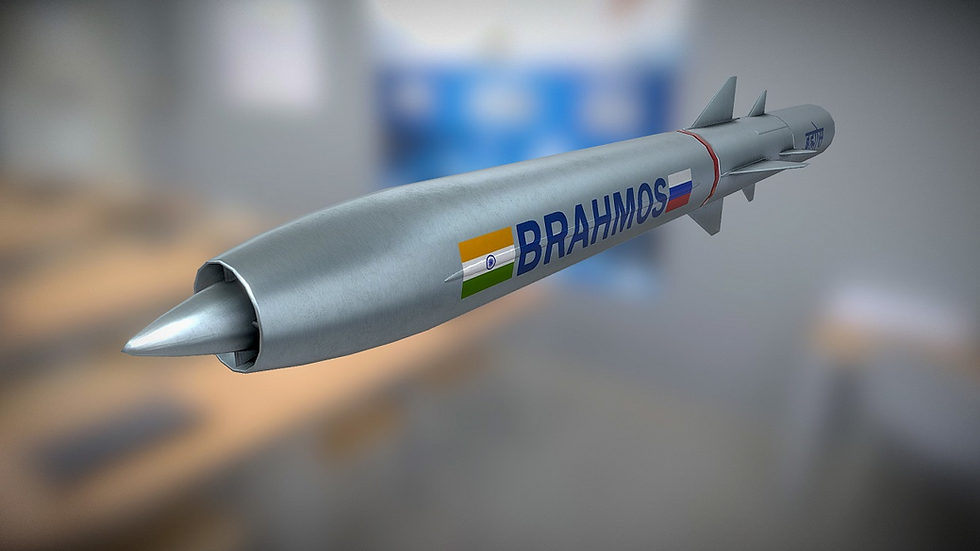BrahMos missile misfire is not a cause for concern: IAEA
- Ujjawal Anand
- Nov 22, 2022
- 3 min read
A nuclear-capable BrahMos cruise missile that was unintentionally launched on March 9 landed deep within Pakistani territory.

The recent BrahMos missile misfire was not viewed by the international nuclear watchdog IAEA as being of "specific concern," and the incident did not in any way cast doubt on the security of nuclear weapons or material in India.
A nuclear-capable BrahMos cruise missile that was unintentionally launched on March 9 landed deep within Pakistani territory. Due to the lack of a weapon it was carrying, there was no explosion or damage. Three Indian Air Force officers had their employment terminated in August of this year as a result of their involvement in the accident, which was the subject of a court of inquiry.
Grossi responded, "No, we didn't," when asked explicitly if the IAEA had asked the Indian government for any information regarding this occurrence. When questioned if the incident cast doubt on the security of nuclear material in the nation, he also gave a negative response.
"We constantly monitor all global circumstances, and we naturally watch with interest when a highly significant IAEA member state experiences problems. However, it (the BrahMos event) was never something that particularly concerned us, according to Grossi.
He predicted a "steep" increase in nuclear power generation and said he saw a bright future for nuclear energy in India, particularly for new technology.
"I view India as a platform for the deployment of innovative technologies and nuclear power. One of the few nations that have been steadily researching breeder reactors, fast reactors, sodium reactors, and numerous other technologies that few nations have been pursuing is India. I'm especially curious to know if India is also thinking about using small modular reactors. I want to talk with the Indian government about this because I haven't seen any indications on that front so far. According to me, India's climate, geography, morphology, vast distances, and remote locations are ideal for these kinds of reactors. But, of course, that is a decision for the government to make," he remarked.
While it is true that India's nuclear business is not expanding as quickly as many had anticipated, according to Grossi, this could change at any time.
"When a decision is made in this area, India's great dynamism and technological foundation will enable it to do this (accelerate the deployment of nuclear power) very fast. Only a small number of nations—or perhaps even fewer—can increase the deployment of nuclear energy quickly, he said.
Less than 2% of India's 407 GW installed electricity capacity, or the installed capacity of its 22 operating nuclear power reactors, is 6,780 MW. Ten additional nuclear power stations are now being built in India and are anticipated to go online during the next five to ten years. According to Grossi, the startup time for new nuclear power facilities in India has typically been between eight and fifteen years, but this can be sped up.
China is constructing nuclear power plants at an amazing rate. It reminds me of what we experienced in the 1970s in America. Every five years or so, a new nuclear power plant is built. Some have even been constructed in China in just three and a half years. Truthfully, nothing inherent precludes the construction of nuclear reactors within quite realistic timeframes that correspond to the urgency demanded by the crisis of climate change. If you want to eliminate carbon dioxide by 2040 or 2050, you'd need to develop nuclear reactors quickly. In the next ten years, India will build ten more reactors, which is fantastic, he remarked.






Comments